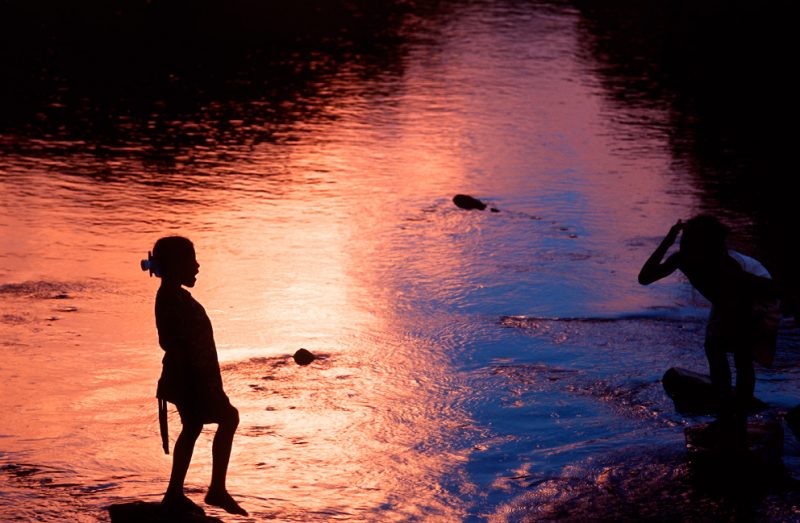Mananara – a remote village in the jungle
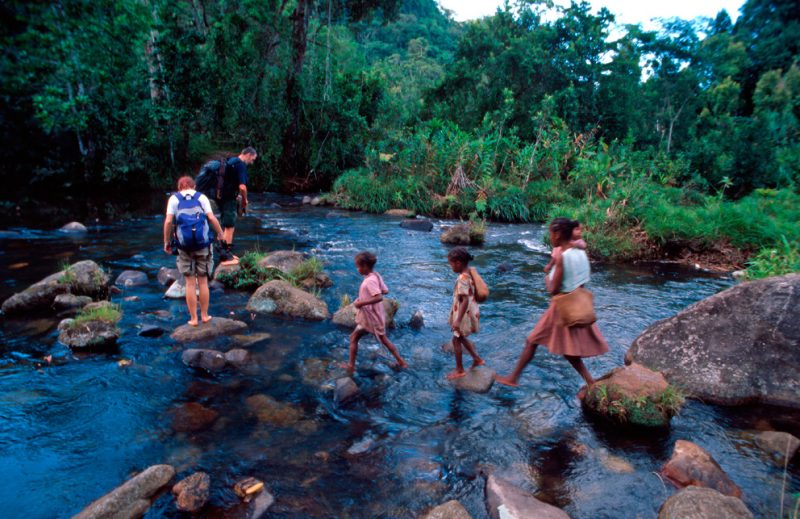
During our expedition to Madagascar, I spent several days in one very remote village in Mananara National Park. A small stream that flows through the village is a centre of activities.
After adventurous exploring the Tsiribina River, and before our main goal, the scientific work in Masoala National Park, we have decided to spend a week in a remote and little explored Mananara national park. After gruesome voyage from Toamasina to Mananara town that took us two days and a day of rest, we have finally set our foot in this park. Our base was Varary village, nestled in the gentle, rolling hills. The village was from a tale – wooden huts with thatched roofs, draped in a green tapestry of the bananas, manioc, and other plants. We got one of such huts, for visitors of the national park. It had basic beds and a small kitchen outside.
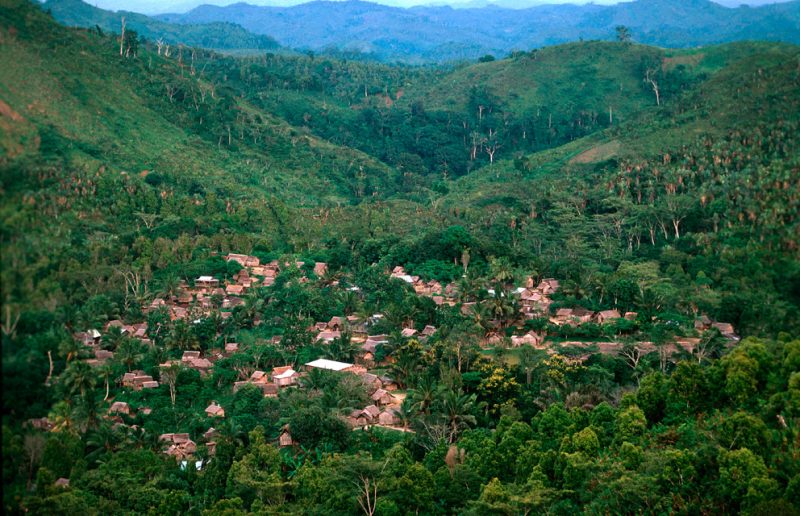
The life here revolves around the rice, as usual in Madagascar. We are lucky that the rice is becoming ripe at the onset of the dry season in March and the harvest it is a daily work, bringing it from the fields to the village. I could witness the last stages of the harvest. The rice comes in the village cut in bundles, knotted together with leaves and then being treshed the rice ears against the stone or some wooden tool, to separate grains from the straw.
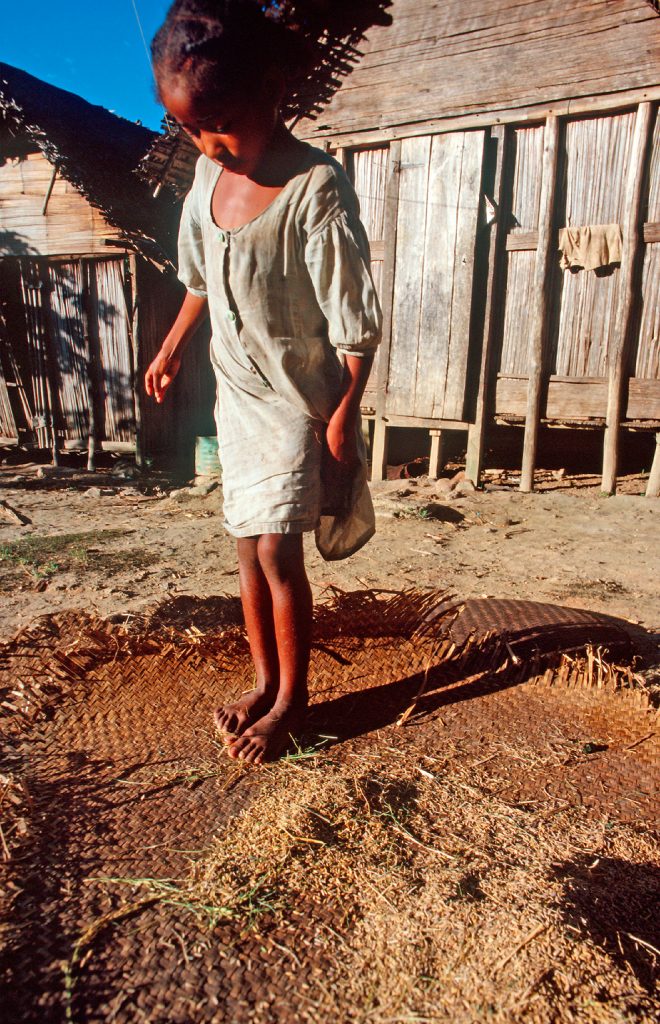
The rice is drying on woven mats and then stored. The rice still sticks in their husks, so before the consumption, the women stamp the rice with huge wooden poles in stone bowls. Separating the loose husks from the grain is done by swinging large, flat wooden bowls. Every time rice soars into the air, the wind takes some husks away, until only the pure, hulled rice is left.
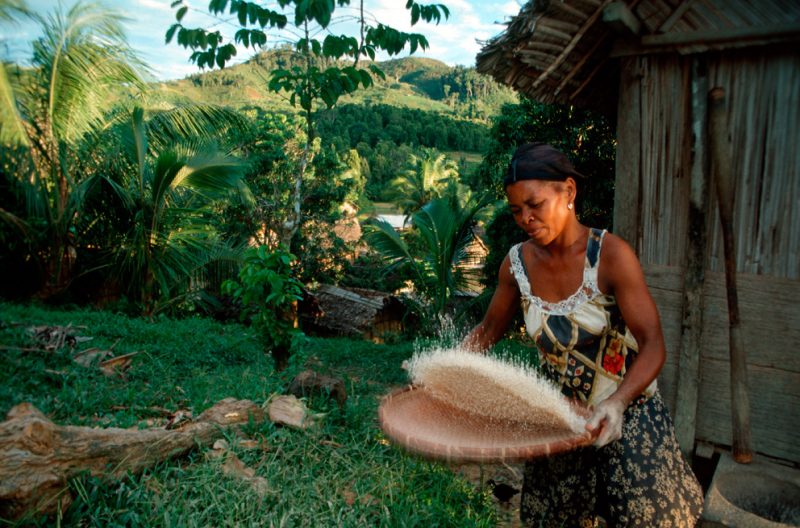
On other mats on the ground, I see drying coffee grains and other agriculture products. Life seems so serene here. But it’s a hard life. Men go to the fields every morning, and we followed them every day partially, going to our research of the frogs in the jungle. Most of the rice fields are located in the small valley, and to get it, the farmers wade in the small stream. It turned out, that this small stream is the main road for some hundred meters. People going with tools in one direction, full of green vegetables, rice, bananas and other fruits on the way back.
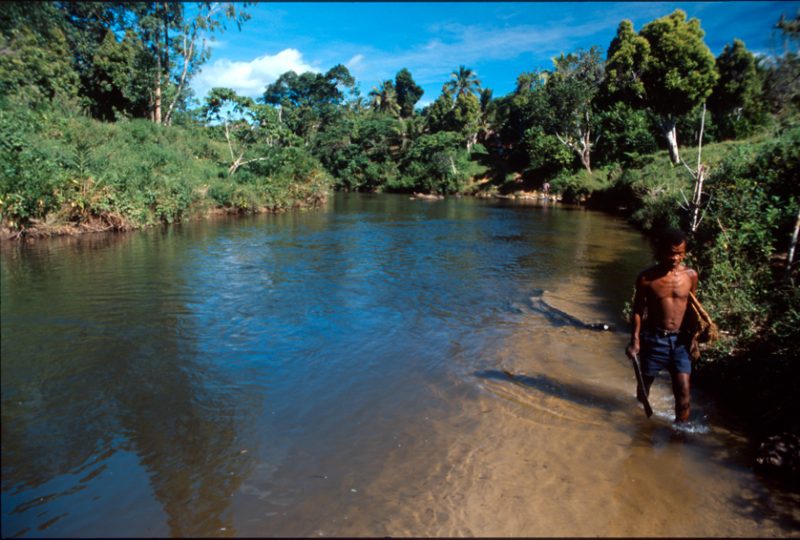
At the same time, it is also the source of the food. It is more a role of younger children. Fish is the obvious choice, an important source of the proteins when there are no markets nearby, and even if it was, people are abjectly poor, in terms of the finances as we westerners see it. One very cute girl was even chasing crayfish on the bottom with a basket.
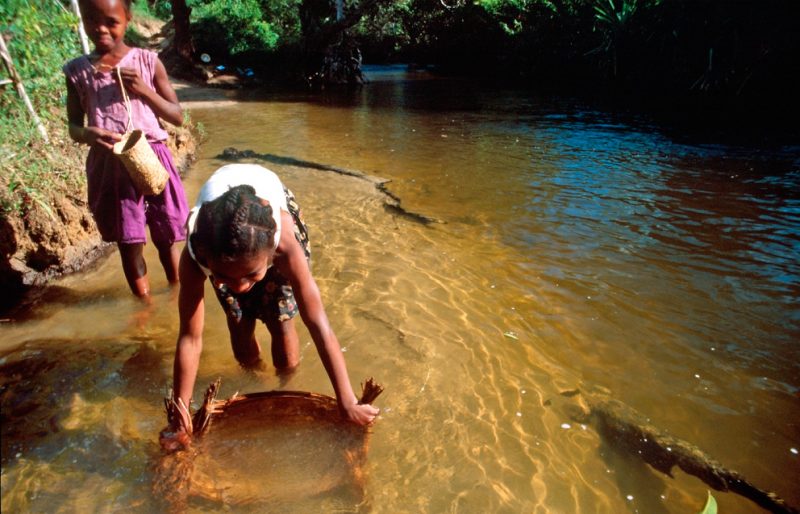
The youngest ones are using the stream just for refreshing and fun. Naked as in Eden, nothing to be ashamed of, they jumped, frolicked, chased each other…It was really so idyllic picture. I only hope there is not bilharzia in this water, a dreaded disease that is being spread in the water by tiny parasites that break in through the skin and entering internal organs.
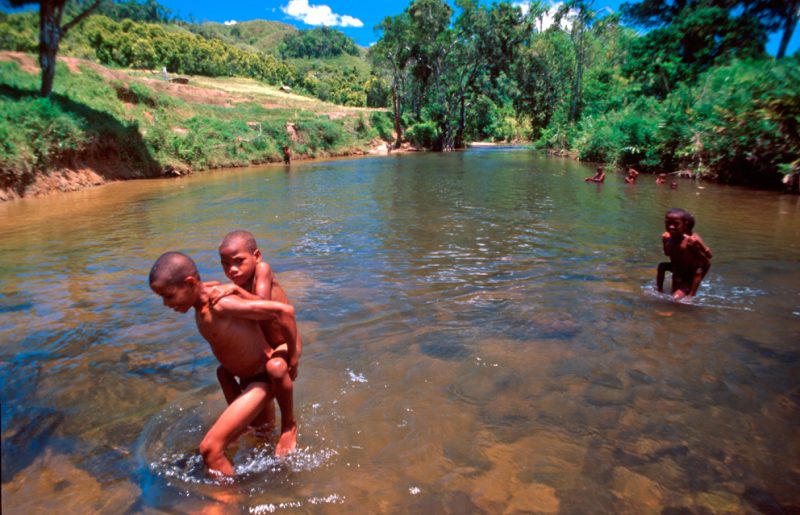
Later, when the sky turned red, adults joined them. It is a bath and washing time. Girls brought the dishes and began washing it on the rocks on the river bank, while other did the laundry.
